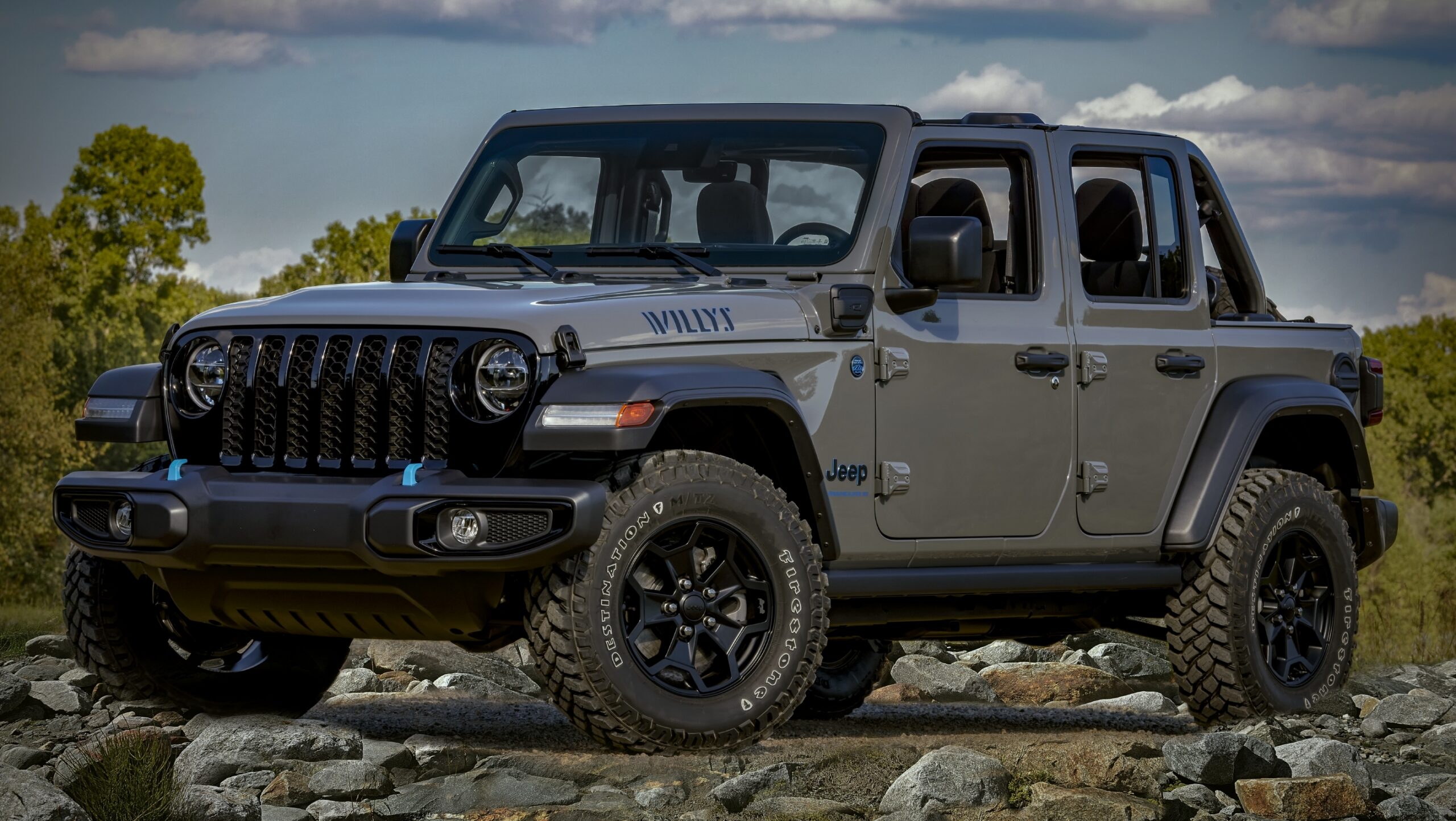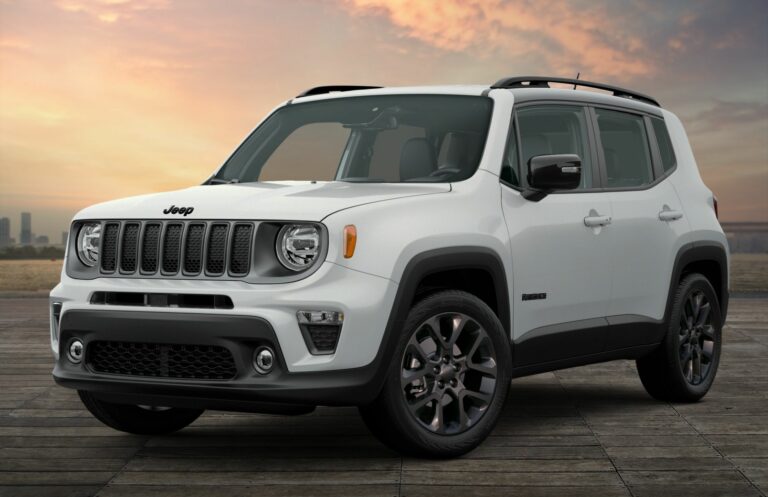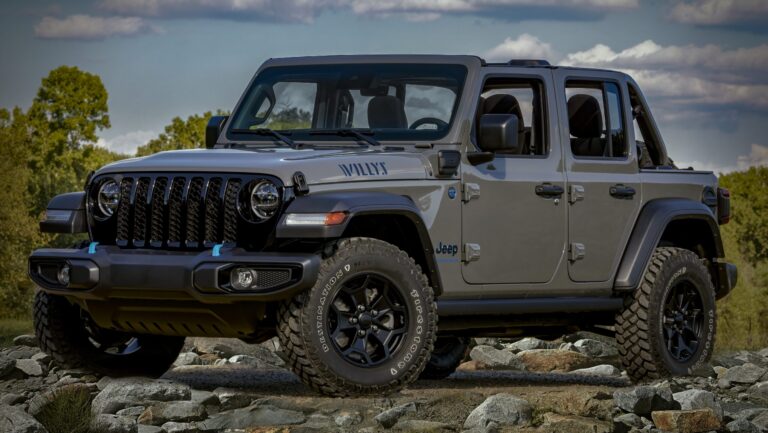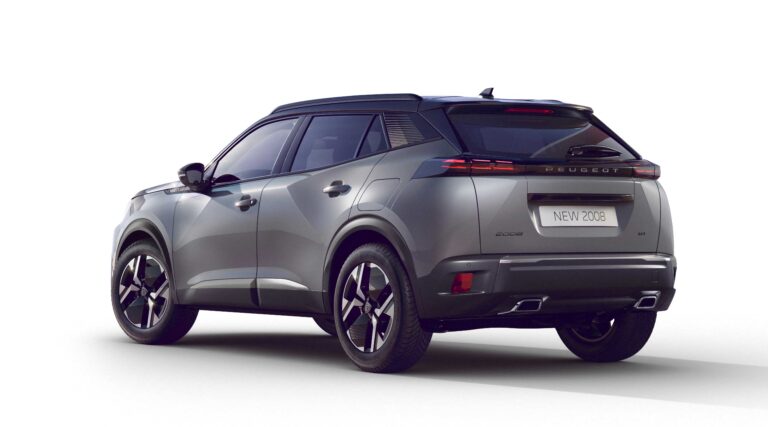Jeep Liberty Used Cars For Sale: Your Comprehensive Guide to Finding the Perfect Off-Road Ready SUV
Jeep Liberty Used Cars For Sale: Your Comprehensive Guide to Finding the Perfect Off-Road Ready SUV jeeps.truckstrend.com
The Jeep Liberty, a compact SUV produced from 2002 to 2012, holds a unique place in the crowded automotive market, especially for those venturing into the used car segment. More than just another crossover, the Liberty was designed to bridge the gap between the rugged, utilitarian Wrangler and more urban-oriented SUVs. It offered a blend of daily drivability, respectable fuel efficiency (for a Jeep), and the undeniable off-road prowess synonymous with the Jeep brand. For budget-conscious adventurers, first-time off-roaders, or simply those seeking a distinctive and capable vehicle, a used Jeep Liberty presents a compelling proposition.
This comprehensive guide will delve into everything you need to know about purchasing a used Jeep Liberty, from understanding its different generations and key features to navigating the buying process, identifying common issues, and maintaining your investment. Our goal is to equip you with the knowledge and practical advice to make an informed decision and find a Liberty that perfectly suits your needs and budget.
Jeep Liberty Used Cars For Sale: Your Comprehensive Guide to Finding the Perfect Off-Road Ready SUV
Why Choose a Used Jeep Liberty? Unpacking its Enduring Appeal
Opting for a used Jeep Liberty comes with a host of advantages that make it an attractive choice for various buyers:
- Affordability: As a discontinued model, the Liberty offers significant depreciation, making it an excellent value compared to newer SUVs with similar capabilities. You can often find well-maintained examples at very competitive price points.
- True Jeep Capability: Unlike many modern "soft-roaders," the Liberty, particularly models equipped with 4WD, is genuinely capable off-road. Its independent front suspension and live rear axle, along with available low-range gearing (Command-Trac and Selec-Trac systems), allow it to tackle trails, snow, and challenging terrain with confidence.
- Practicality and Size: The Liberty strikes a balance between a compact footprint suitable for city driving and sufficient interior space for passengers and cargo. Its relatively upright seating position and good outward visibility contribute to a comfortable driving experience.
- Distinctive Styling: Especially the first-generation (KJ) Liberty, with its signature round headlights and classic Jeep grille, possesses a unique aesthetic that stands out from more generic SUVs. The second-generation (KK) adopted a more traditional, boxy SUV look, appealing to those who prefer a more rugged appearance.
- Strong Aftermarket Support: As a Jeep, the Liberty benefits from a vast aftermarket community. This means a wide array of parts, accessories, and upgrade options are available, allowing owners to customize their vehicles for enhanced off-road performance, utility, or aesthetics.
- Reliable Powertrain (Generally): The omnipresent 3.7L V6 engine, while not a powerhouse, is known for its durability if properly maintained. This commonality also means parts are readily available and mechanics are familiar with it.
![]()
For individuals seeking a versatile vehicle that can handle daily commutes, weekend adventures, and isn’t afraid to get a little dirty, a used Jeep Liberty offers a compelling blend of ruggedness, practicality, and value.
Generations of the Liberty: KJ vs. KK
Understanding the two distinct generations of the Jeep Liberty is crucial for any potential buyer, as they offer different aesthetics, features, and driving characteristics.

First Generation (KJ: 2002-2007)
The original Liberty, known by its internal code "KJ," was a groundbreaking model for Jeep. It was the first Jeep vehicle to feature independent front suspension, aiming to improve on-road ride quality.
- Key Features: Distinctive round headlights, upright windshield, available 2.4L I4 engine (early models, rare), dominant 3.7L V6, optional 2.8L CRD (Common Rail Diesel) engine (2005-2006, highly sought after but rare), Command-Trac (part-time 4WD) and Selec-Trac (full-time 4WD) systems.
- Pros: More classic Jeep appearance, generally considered more off-road capable than the KK (especially in Renegade trim), optional manual transmission, robust drivetrain.
- Cons: Interior plastics can feel cheap, older technology, known issues like lower ball joint failures and window regulator problems, susceptibility to rust in northern climates.

Second Generation (KK: 2008-2012)
The "KK" generation Liberty underwent a significant redesign, adopting a more traditional, boxier SUV shape reminiscent of the larger Jeep Commander and Cherokee (XJ).
- Key Features: Square headlights, more refined interior, standard 3.7L V6 engine (no I4 or diesel options), improved safety features, available UConnect infotainment (later models).
- Pros: Smoother on-road ride, more modern and spacious interior, improved crash test ratings, better standard features.
- Cons: Less distinctive styling compared to the KJ, heavier, some argue it’s slightly less off-road focused out of the box (though still very capable), higher curb weight can impact fuel economy slightly.
Which to choose? If you prioritize classic Jeep looks, potentially more rugged off-road capability, and don’t mind a simpler interior, the KJ might be for you. If a more refined ride, modern interior, and improved safety features are important, the KK is likely the better choice.
Key Features and Trims to Look For
When browsing used Jeep Liberty listings, you’ll encounter various trims and drivetrain configurations. Knowing what each offers can help you narrow down your search:
- Trims:
- Sport: The base model, offering essential features.
- Limited: Mid-range trim with more creature comforts like power accessories, alloy wheels, and often leather seats.
- Renegade (KJ only): The most off-road oriented trim, featuring unpainted fender flares, roof lights, skid plates, and sometimes unique wheels. A popular choice for enthusiasts.
- Latitude (KK only): A more upscale trim, often replacing the Limited in later years, offering premium features.
- Drivetrain Options:
- 2WD (Two-Wheel Drive): Rear-wheel drive, suitable for paved roads and light-duty use. Generally, the most fuel-efficient option.
- Command-Trac (Part-Time 4WD): Found on many KJ and some KK models. This system offers 2WD, 4-Hi (for slippery surfaces like snow or light trails), and 4-Lo (for serious off-roading or heavy towing). It should not be used on dry pavement in 4WD modes.
- Selec-Trac (Full-Time 4WD): Available on both KJ and KK. This advanced system allows for 2WD, 4-Full Time (which can be used on dry pavement as it has a center differential), 4-Part Time, and 4-Lo. It offers superior versatility for varying conditions.
- Engines:
- 3.7L PowerTech V6: The most common engine across both generations. It’s a reliable workhorse, producing around 210 horsepower. It provides adequate power for most situations but isn’t particularly thrilling.
- 2.4L PowerTech I4 (KJ only): Rare, found in early base models. Underpowered for the Liberty’s weight.
- 2.8L CRD (Common Rail Diesel) (KJ 2005-2006 only): A highly sought-after option for its impressive torque and superior fuel economy (often 20-25+ MPG). However, it’s rare, and finding mechanics familiar with its specific maintenance needs can be a challenge.
Prioritize 4WD models if you plan on any off-road excursions or live in an area with heavy snow. For daily commuting on pavement, a 2WD model can suffice and offer slightly better fuel economy.
The Buying Process: A Step-by-Step Guide to Finding Your Liberty
Purchasing a used car, especially an older SUV like the Liberty, requires diligence. Follow these steps to maximize your chances of a successful purchase:
-
Define Your Needs and Budget:
- Purpose: Will it be a daily driver, weekend adventurer, or off-road project? This influences your need for 4WD, specific trims, and overall condition.
- Budget: Determine your absolute maximum purchase price, including potential immediate repairs, registration, and insurance. Remember that older vehicles may require more upfront maintenance.
- Generation Preference: KJ or KK? Decide which styling and feature set you prefer.
-
Research and Locate:
- Online Marketplaces: Websites like AutoTrader, Cars.com, CarGurus, eBay Motors, and even local Facebook Marketplace groups are excellent resources.
- Dealerships vs. Private Sellers: Dealerships may offer warranties and financing, but prices are often higher. Private sellers can offer better deals but typically provide no warranty.
- Local Searches: Expand your search radius if necessary, but remember to factor in travel costs for inspection.
-
Initial Screening and Communication:
- Ask Questions: Before seeing the car, inquire about its maintenance history, why it’s being sold, any known issues, and if the title is clear.
- Request Photos/Videos: Ask for detailed photos, especially of potential problem areas like rust, undercarriage, and interior wear.
-
Thorough Inspection (In-Person):
- Exterior: Check for rust, especially on rocker panels, wheel wells, and frame. Look for mismatched paint, signs of previous accidents (uneven panel gaps, overspray). Inspect tires for even wear and sufficient tread depth.
- Interior: Look for excessive wear on seats, carpets, and steering wheel. Test all electronics (windows, locks, radio, AC/heater, lights, wipers). Check for dampness or mold, which could indicate leaks.
- Under the Hood: Look for fluid leaks (oil, coolant, power steering, transmission). Check fluid levels and clarity. Inspect belts and hoses for cracks or wear. Listen for unusual noises upon startup.
- Undercarriage: If possible, get under the car. Look for frame damage, excessive rust, leaks from the differential or transfer case, and condition of suspension components (bushings, shocks, springs). This is crucial for a Jeep.
-
Test Drive:
- Drive on various road surfaces (pavement, bumps, even a gravel road if safe and permitted).
- Listen for strange noises (clunks, squeals, grinding) from the engine, transmission, or suspension.
- Check steering for play or pulling.
- Test brakes for responsiveness and vibration.
- Test all gears, including reverse, and if 4WD, engage each mode (2WD, 4-Hi, 4-Lo) on a loose surface (gravel, dirt) to ensure they work properly.
- Pay attention to how the transmission shifts – smooth or harsh?
-
Vehicle History Report (VHR):
- Obtain a CarFax or AutoCheck report. This is non-negotiable. It can reveal accidents, flood damage, salvage titles, odometer rollbacks, and past service records.
- Verify the VIN on the report matches the vehicle.
-
Pre-Purchase Inspection (PPI):
- Strongly recommended. Take the Liberty to an independent, trusted mechanic (ideally one familiar with Jeeps) for a thorough inspection. They can identify issues you might miss and provide an estimate for necessary repairs. This small investment can save you thousands.
-
Negotiation and Purchase:
- Use any identified issues from the PPI as leverage for negotiation.
- Be prepared to walk away if the seller isn’t willing to negotiate or if the vehicle has too many red flags.
- Ensure all paperwork is correct and the title is clear before handing over payment.
Common Issues and What to Watch Out For
While generally reliable, certain issues are common across Jeep Liberty models. Being aware of these can help you during your inspection and post-purchase maintenance.
First Generation (KJ: 2002-2007) Specific Issues:
- Lower Ball Joint Failure: This is the most critical and widely known issue. Early KJ models had ball joints prone to premature wear, which could lead to catastrophic wheel separation. Many were subject to recalls, so check if the recall was performed. Even if it was, inspect them during the PPI.
- Window Regulators: The power window regulators are notorious for failing, causing windows to fall into the door. Replacements are readily available, but it’s a common repair.
- Rust: Especially in areas that use road salt, KJs are prone to rust on rocker panels, rear quarter panels, and sometimes the frame. Thoroughly inspect these areas.
- HVAC Blower Motor Resistor: Can fail, leading to inconsistent fan speeds.
Second Generation (KK: 2008-2012) Specific Issues:
- TIPM (Totally Integrated Power Module) Issues: The TIPM controls many electrical functions. A failing TIPM can cause a variety of bizarre electrical gremlins, from non-working wipers to intermittent engine starting. This can be an expensive fix.
- Power Window Issues: While less frequent than the KJ, the KK can still experience window regulator problems.
- Suspension Component Wear: Bushings and tie rods can wear out over time, leading to clunks or loose steering.
- Brake Caliper Sticking: Can lead to uneven brake pad wear and pulling.
General Issues (Both Generations):
- 3.7L V6 Engine: Generally robust, but check for oil leaks (especially around the valve covers and oil pan), excessive engine noise (ticking, knocking), and proper fluid levels. Overheating can damage these engines.
- Transmission: Automatic transmissions are generally durable but ensure smooth, consistent shifts without slipping or harshness.
- 4WD System: Test the engagement of 4WD modes on a loose surface. Ensure there are no grinding noises or difficulty shifting into/out of 4WD.
- Fluid Leaks: Inspect for leaks from the engine, transmission, transfer case, and differentials.
Always prioritize a vehicle with detailed service records. A history of consistent maintenance is a strong indicator of a well-cared-for vehicle and can mitigate the risk of encountering these common problems.
Owning a Used Jeep Liberty: Maintenance & Upgrades
Once you’ve acquired your used Jeep Liberty, responsible ownership involves regular maintenance and, for many, the exciting world of aftermarket upgrades.
- Regular Maintenance: Adhere to the manufacturer’s recommended service intervals for oil changes, fluid checks (transmission, differential, transfer case, coolant), tire rotations, and brake inspections. Pay particular attention to suspension components, especially the ball joints on KJs.
- Preventative Measures: Address any known common issues proactively. For example, if your KJ hasn’t had its ball joints replaced, consider it a priority. Inspect for rust regularly and treat any spots before they spread.
- Aftermarket Support: The Liberty, like most Jeeps, has a fantastic aftermarket. You can find:
- Lift Kits: Ranging from mild leveling kits to substantial lifts for increased ground clearance and larger tires.
- Tires: Upgrading to all-terrain or mud-terrain tires can dramatically improve off-road performance and the vehicle’s aesthetic.
- Skid Plates & Rock Sliders: For serious off-road protection.
- Bumpers & Winches: Enhancing recovery capabilities and rugged looks.
- Roof Racks & Cargo Solutions: For carrying gear, tents, or other adventure equipment.
Embracing the Liberty’s potential for customization can turn it into a truly personalized adventure vehicle.
Jeep Liberty Used Cars For Sale: Estimated Price Table
Prices for used Jeep Liberties can vary significantly based on year, mileage, condition, trim level, 2WD/4WD, and geographic location. The table below provides general average price ranges for models in good, running condition, but these are estimates only.
| Year Range | Generation | Trim Examples | Drivetrain | Typical Mileage Range | Average Price Range (Good Condition) | Notes





